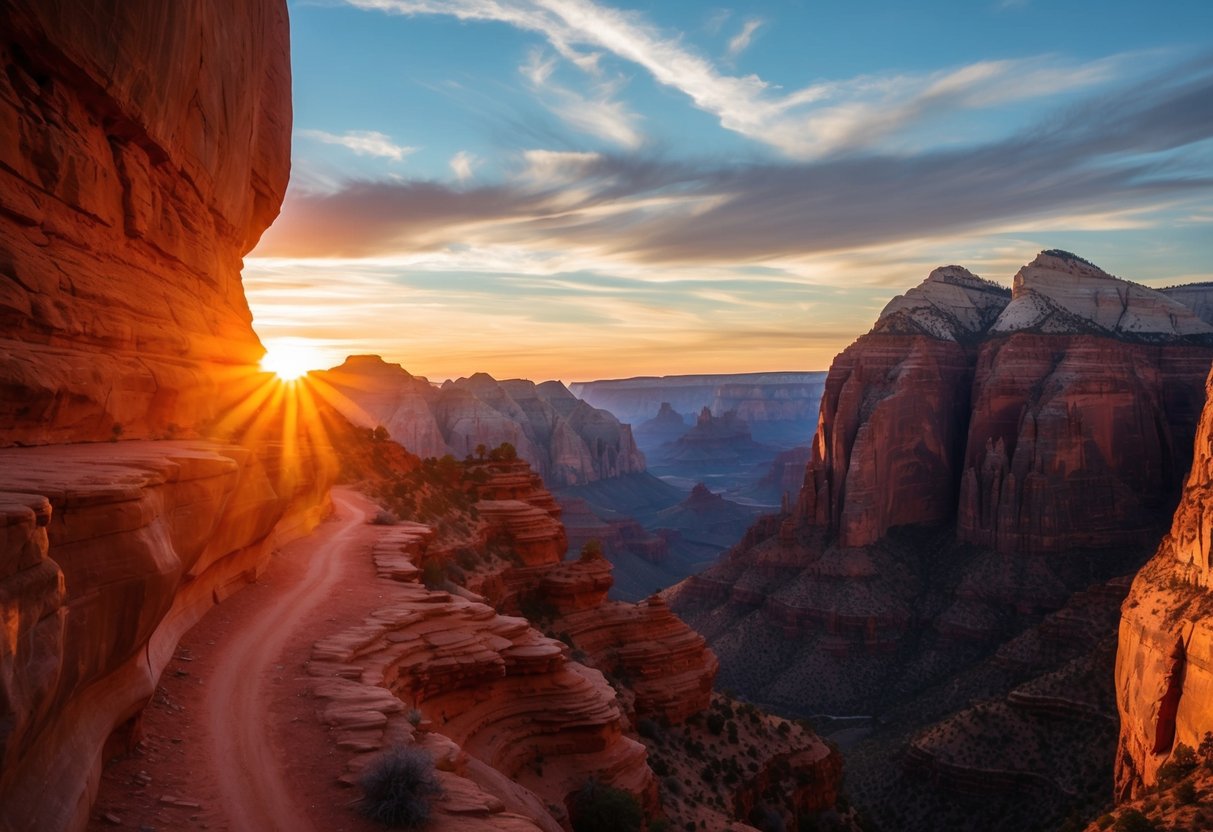
Zion National Park, located in Southern Utah, features some of the most breathtaking natural landscapes in the United States. From its towering cliffs to its winding canyons, this park offers endless opportunities for outdoor enthusiasts to explore and enjoy. Those who venture here will witness the sheer grandeur of nature’s artistry, making it a must-visit destination.
The dramatic landscape of Zion captures the imagination with its vibrant colors and unique geological formations. Visitors can embark on hikes that range from easy strolls to challenging adventurous trails, allowing them to immerse themselves in the park’s beauty. The experience of standing at the edge of a majestic canyon, feeling the vastness of the terrain, is both humbling and exhilarating.
Whether hiking the famous Angel’s Landing or safely navigating the Narrows, the park provides unforgettable experiences for all. The diverse scenery and abundant wildlife make Zion National Park a location that appeals to both seasoned hikers and casual sightseers alike. Discover the wonders that await in this stunning corner of Southern Utah.
History and Geology of Zion
Zion National Park showcases ancient natural wonders, with its towering sandstone cliffs and a deep human history. Both the geology and cultural past offer visitors a glimpse into the stories etched in the landscape.
Formation of Sandstone Cliffs
The majestic sandstone cliffs of Zion are primarily formed from Navajo Sandstone, which dates back approximately 190 million years. These sedimentary rocks originated from ancient deserts, where vast sand dunes gradually compressed and solidified over time.
Erosion played a crucial role in shaping the current landscape. Water, particularly from the Virgin River, carved deep canyons, revealing dramatic cliffs that tower above the valley. The vivid colors of the rock layers, ranging from reds to oranges, reflect varying mineral content and geological processes. This interplay of time and nature has created one of the most striking geological formations in the American Southwest.
Human History Museum
The human history of Zion is preserved and celebrated at the Human History Museum, located within the park. This museum offers insights into the lives of the Native American tribes, such as the Paiute, who inhabited the region long before European settlers arrived. It details their enduring connection to the land and its resources.
The museum also chronicles the exploration and settlement by Mormons in the 19th century, highlighting their lasting impact on the area. Artifacts, exhibits, and interactive displays engage visitors with the rich cultural tapestry of Zion. The museum serves as a valuable resource for understanding the intertwined history of people and the land.
Park Overview and Visitor Information
Zion National Park offers an unforgettable experience marked by its towering cliffs and intricate canyon systems. Visitors can explore this natural wonder through various activities and gather essential information at the Zion Canyon Visitor Center.
Zion Canyon Visitor Center
The Zion Canyon Visitor Center is operated by the National Park Service. It’s the gateway to understanding the park’s geology, history, and wildlife. Located near the park’s south entrance, this facility provides maps, brochures, and ranger-led orientation talks to help visitors plan their day.
Exhibits inside the center showcase the unique landscape and native species. Visitors benefit from the interactive displays that highlight conservation efforts and safety tips. The center also offers a bookstore with guides and souvenirs. Shuttle services from Springdale to various trailheads start here, ensuring a structured visit.